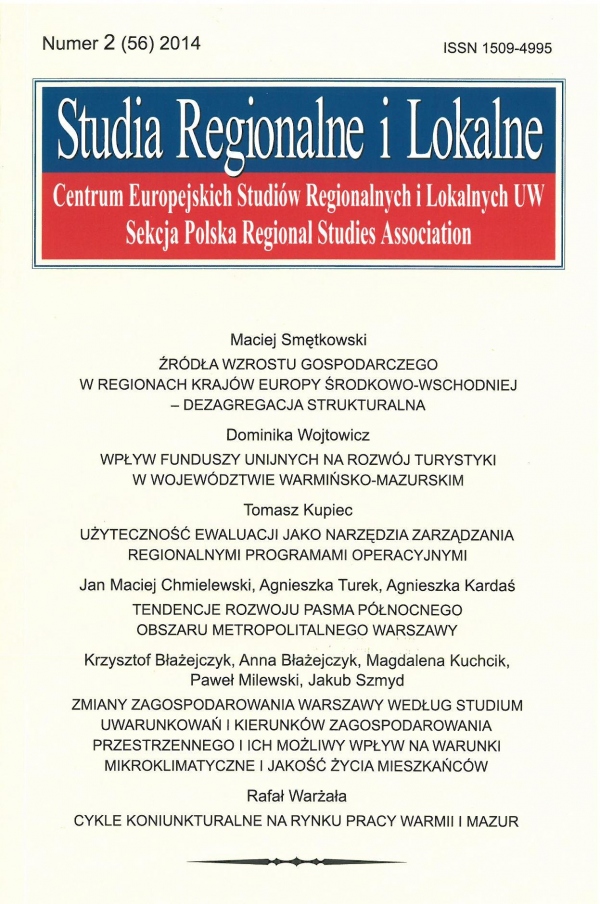Published in
2(56)/2014

- Maciej SmętkowskiSources of economic growth in CEEC regions – a structural disaggregation[more]
- Dominika WojtowiczThe impact of EU funds on tourism development in the warmińsko-mazurskie voivodeship[more]
- Tomasz KupiecThe usability of evaluation as a tool for managing regional operational programmes[more]
- Jan Maciej Chmielewski, Agnieszka Turek, Agnieszka KardaśDevelopment trends of the northern part of the Warsaw metropolitan area[more]
- Krzysztof Błażejczyk, Anna Błażejczyk, Magdalena Kuchcik, Paweł Milewski, Jakub SzmydChanges in the spatial organization of Warsaw and their possible influence on microclimatic conditions and quality of life of urban citizens[more]
- Rafał WarżałaBusiness cycle fluctuations on the labour market in the Warmia and Mazury region[more]
- Roman SzulMarek Barwiński, 2013, Geograficzno-polityczne uwarunkowania sytuacji Ukraińców, Łemków, Białorusinów i Litwinów w Polsce po 1944 roku (recenzja)[more]
- Roman SzulAndrzej Rykała, 2011, Mniejszości religijne w Polsce. Geneza, struktury przestrzenne, tło etniczne (recenzja)[more]


